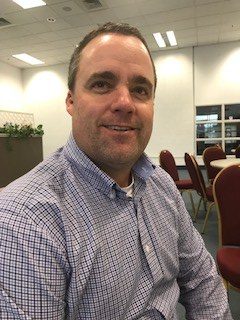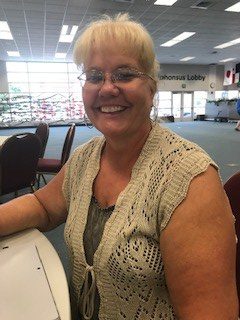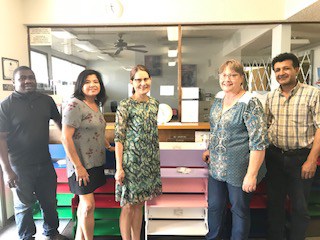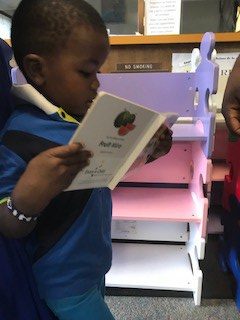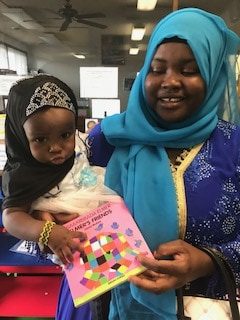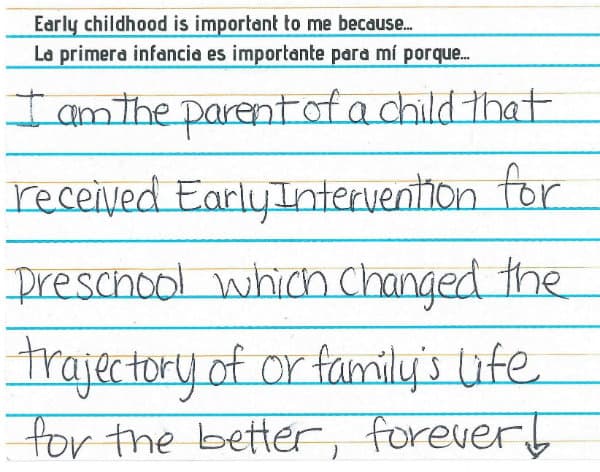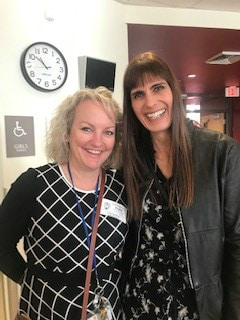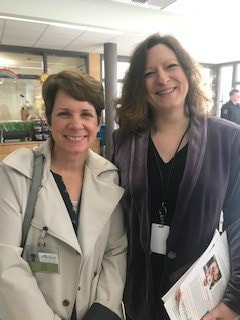
by Danielle Pacifico-Cogan | Jul 29, 2019 | Successful Students, Community Engagement, Professional Learning
Photo of the Snake River near Ontario, Oregon, in Malheur County. Photo credit: Ken Lund
For the last three years, educators from Malheur County and the surrounding communities have attended the Malheur Summer Institute for professional development. The Institute provides educators in far eastern Oregon the opportunity to meet with colleagues and explore ideas and best practices to better serve children in their communities. Designed for educators serving young people birth to 20, the Institute is an invaluable resource in a county that’s larger than the state of Rhode Island but has a population of 30,000 people.
The Institute was created by Malheur Education Service District (ESD) Superintendent Mark Redmond, who has worked for seven years at the ESD (three as superintendent) and 14 years as a teacher in Vale, Oregon. Superintendent Redmond knows the importance of supporting teachers and creating systems that allow students to thrive.
Children’s Institute staff visited Ontario, the Malheur County seat this week, to attend the Malheur Summer Institute and a book giveaway for children who are refugees or born in the United States to refugee parents. We talked with the superintendent and special education director about the passage of the Student Success Act and the unprecedented opportunity in Oregon to focus new significant public investment on education from early learning to high school. According to Redmond, “The money and resources in the Student Success Act for Early Intervention and Early Childhood Special Education (EI/ECSE) and early education generally will be a game changer for us. Time and time again we see, and research shows the more time and money is invested in early learning, the more impact we have on kids in the long run.” The Student Success Act’s comprehensive, global approach to education will affect kids throughout their academic life.
Mark Redmond, Superintendent, Malheur ESD (above). Teresa Jones, SPED Director, Malheur ESD (below).
Throughout Oregon, where resources for essential services are slim, the annual $1 billion in public funding for education will help close gaps. Oregon teachers and school districts have been doing the work of educating and nurturing children’s natural love of learning, but the funding hasn’t been enough. “This will give us the chance to fully fund Measure 98, which is huge for us. We’ll also be able to address some of the big expenditures we have in mental health and trauma informed care, and the need for counselors.” For Teresa Jones who has worked in education for 21 years and is the Special Education Director for the Malheur ESD, the Student Success Act allows Oregon to follow through on proven practices that provide lifelong positive outcomes for young children. “So many kids enter kindergarten without having high-quality early learning experiences. Some have never even held a pencil before coming to school. It will be great to get this funding to kids.”
While Malheur County borders Idaho and a small stretch of Nevada, the region’s early childhood needs are like those across the state, from the North Coast to the Willamette Valley down to Southern Oregon. Every family in Oregon wants their child to have the best start in life. And local context matters. What may work for a large urban area may not get the best results in a small rural community. A key opportunity at the heart of the Student Success Act is focusing resources in communities to improve outcomes for kids and train and support the workforce responsible for growing young minds. Education has the power to be a transformative experience that prepares young people to enter the world with the confidence and knowledge to be engaged, productive members of their communities. What’s good for kids is good for Oregon.

by Danielle Pacifico-Cogan | Jul 24, 2019 | Dual Language Learners, Community Engagement, Parents and Families
At the Four Rivers Welcome Center in Ontario on Monday, people from Iraqi, Mexican, African, and European heritage sit on the floor building colorful, whimsical bookshelves. They are preparing for a literacy event for young children who are either refugees themselves or born in the United States to refugee parents. The year-old Welcome Center, sponsored by the Four Rivers Free Clinic, serves as an Eastern Oregon satellite office for IRCO.
Along with the bookcases, children who attend the event will receive books in Somali and English, as well as blank books in which to write their own stories. Parents will receive a demonstration on how to read with young children.
To learn more about the refugee community in Oregon, listen to our interview with Abdikadir Bashir Mohamud, executive director at the Center for African Immigrants and Refugees of Oregon.

by Danielle Pacifico-Cogan | Jan 18, 2019 | Oregon Policy, Preschool, Successful Students

Last week, Children’s Institute staff visited Medford for two days to hear from parents and teachers and tour early childhood facilities with state legislators. From Coquille to Baker City, Redmond to the Rogue Valley, we continue to hear the same message from parents, educators, and providers: families want and need high-quality early care and education for their young children, and there isn’t enough access to either anywhere in Oregon. Families have also told us they want parenting education that supports positive, nurturing parenting and teaches them how to enhance their children’s natural love of learning.
The parents we heard from in Medford understand that babies are born learners. In fact, the developmental period of prenatal to age 5 is the most significant period of brain growth and development in their entire lives. The attention, care, and education young children receive during this important time sets the foundation for all future learning and life experiences.
At Kid Time Children’s Museum, home of The Learning Loft Preschool, more than 40 parents, providers, and community members attended a forum to share via postcard with us and their lawmakers why early childhood is important to them. Cynthia Wright, who serves on the Medford School Board wrote, “I strongly feel that having the funds to have preschool as part of K–12 education would make a huge impact on student achievement in Oregon.” With four classrooms at Kid Time and one at Jackson Elementary School, The Learning Loft Preschool provides high-quality, child-centered, play-based learning to young children with a range of needs: 100 percent of children live in low-income households, 80 percent have been exposed to trauma, and 20 percent have diagnosed developmental delays.
One parent at the forum whose child received Early Intervention during preschool at The Learning Loft wrote that those services “changed the trajectory of our family’s life for the better, forever.” Another attendee explained the long-term benefits of high-quality preschool.
“It sets the stage for K–12 success. It’s cheaper to spend the money for this than incarceration later in life. Success breeds success. Kids deserve to have a good life and receive the best opportunities to be happy and contributing members of their communities.” High-quality early education also benefits parents. “Some of our parents need a lot of help like getting their kids dressed and ready for school. When we help parents where they struggle, we’re building trust and we’re helping them build skills that will help their children,” said Sunny Spicer, Kid Time Museum’s executive director.
The following day, on tours of Kid Time Museum, the Family Nurturing Center, and Jackson Elementary, state legislators Senator Jeff Golden, Representative Pam Marsh, and Representative Kim Wallan, as well as local law enforcement, learned firsthand about the tremendous benefits of early childhood programs and services. For example, families who attend The Learning Loft Preschool at Jackson Elementary form positive, trusting relationships with their child’s future elementary school community years before they begin kindergarten. That trust improves attendance and increases a child’s excitement about their own education. According to Jackson Elementary principal Marisa Poling, “The benefit of having the preschool in the elementary school is that we get to know kids from the beginning of their journey and can support and teach them throughout their early educational experiences.”
Supporting young children and their families is at the heart of the services provided inside and outside of the classroom at the Family Nurturing Center. With the stated goal of reducing child abuse and neglect, the center provides parenting education and intervention, preschool, and mental health and family support services. This innovative approach supports healthy parent-child relationships and ensures young children get the high-quality early experiences necessary for success in school and life.
Attendees of the community forum shared their thoughts on early childhood.
Lisa O’Connor, Family Nurturing Center’s executive director, attributes the organization’s success in part to radical non-judgment. “We believe in people until they are ready to believe in themselves,” she says.
The work in Medford demonstrates what a coordinated system of early care and education can do for young children — nurture their love of learning, grow their social emotional skills, and help their parents build positive relationships with them. But with 30,000 eligible children in Oregon lacking access to publicly funded preschool, the need to add programs like these is great. Read more about our 2019 policy agenda and the ways you can get involved with our advocacy efforts.
Liz Landon, Principal of Oak Grove Elementary School, and Representative Kim Wallan.
Cynthia Wright, Medford School Board Chair, and Sunny Spicer, Executive Director of Kid Time.
Representative Pam Marsh and Senator Jeff Golden.
Special thanks to Sunny Spicer, Shannon Young, and Britt Zimmerman from Kid Time Museum, Marisa Poling from Jackson Elementary, Lisa O’Connor from the Family Nurturing Center, and Rene Brandon from the Southern Oregon Early Learning Hub for organizing the visit.
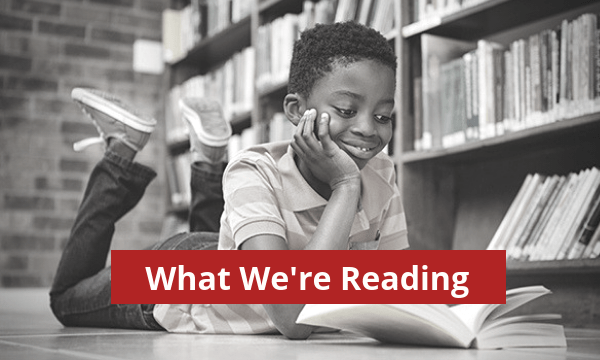
by Danielle Pacifico-Cogan | Apr 11, 2018 | What We're Reading
Early childhood advocates around the country are celebrating the 2018 Omnibus spending bill recently passed by Congress and signed by President Trump. The bill contains a $2.37 billion increase for the Child Care and Development Block Grant (CCDBG), the largest increase in history. Doubling discretionary funding for CCDBG in FY2018 will expand child care assistance in all 50 states and serve approximately 230,000 more children.
The CCDBG program, which provides child care subsidies for low-income families along with funds for improving child care quality, was reauthorized in 2014 and brought changes to care continuity for children and families and improvements to safety and quality. The 2018 funding increase will allow for full implementation of the 2014 reauthorization, including increases in reimbursement rates for providers.
The spending bill also contains increases for other early learning programs, including:
- $610 million for Head Start with $115 million of that for Early Head Start expansion and growth of child care partnerships to improve care quality
- $250 million for Preschool Development Grants designed to help states build or enhance preschool programs or expand high-quality programs
- $35 million for the Child Care Access Means Parents in School (CCAMPIS) program which supports low-income parents attending institutions of higher education
- $24 million for the Individuals with Disabilities Act (IDEA) to support early intervention and services for preschool children with disabilities
- $20 million for 21st Century Community Learning Centers which strengthens after school programs in high-poverty and low-performing schools
- $5 million for infant and early childhood mental health intervention and treatment through the 21st Century Cures Act
Total increases amount to more than $3 billion for early learning and child care nationwide and draw attention to needed improvements in child care quality. Looking ahead, states will have to grapple with using new funds to expand the number of child care slots in the existing system and increase funding per child for existing slots to bolster quality.
High-quality child care providers in this context can be expected to offer rich and diverse learning materials, have cultural and linguistic knowledge to meet the needs of kids and families they serve, have access to ongoing professional learning, and are supported with living wages.
In Oregon, only 16 percent of eligible families receive the subsidy, and when they do receive it the amount per child does not often purchase high-quality child care that supports age appropriate early learning and healthy development. While the Center for Law and Social Policy (CLASP) estimates that CCDBG funds could reach an additional 2,480 kids in Oregon, the approximately $28 million should be used to increase per child spending in order to increase access as well as improve quality, child outcomes, and school readiness.
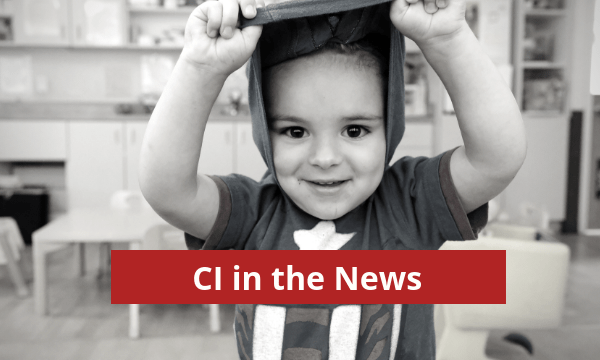
by Danielle Pacifico-Cogan | Jul 5, 2017 | CI in the News, News, Preschool

Read the full story on Oregonlive.
“There’s an incredible need, across the board,” said Danielle Pacifico-Cogan, director of communications and community engagement at the Children’s Institute, a Portland-based non-profit that advocates for young children.
This need, Pacifico-Cogan says, can be traced to a range of factors. Finding an affordable program is one hurdle, but access also plays a large role, she said. For families in rural parts of the state, finding a program close to home is a concern, and for populations like the one Bashir serves, language barriers are often an issue. Sometimes, families don’t understand the importance of preschool. And if they do, Pacifico-Cogan added, “there’s a waitlist everywhere.”
Preschool Promise is a step forward, she says, but it’s not enough. “When you’re in preschool, you learn how to take turns, how to be attentive,” she said. And those letter recognition worksheets the African immigrant children work on, or “pre-reading skills,” come back into play in elementary school. Students who know how to read proficiently by third grade, she noted, are four times more likely to graduate from high school.


